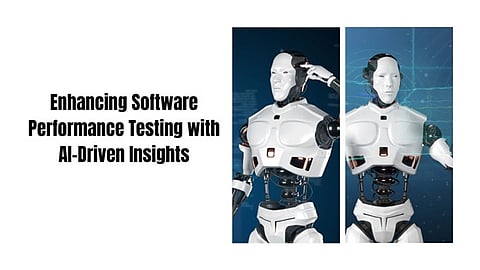

Santhosh Kumar Shankarappa Gotur is a performance engineering expert with a new, innovative framework that can be integrated into software development, for Artificial Intelligence and Machine Learning in software performance testing. The article discusses some of the groundbreaking methodologies that are meant to increase the accuracy of testing, decrease costs, optimize workflows, and make proactive optimization of performance in complex systems across various industries and technological landscapes. These strategies utilize cutting-edge AI-driven tools to deliver unparalleled insight into performance metrics, making them robust and scalable solutions. The framework fills the gap between the traditional practices of old and the dynamic demands of modern software systems.
As the complexity of software systems increases, traditional performance testing methods find it challenging to meet the demands of modern requirements.
Distributed architectures, microservices, and cloud-native applications require more robust, scalable, and efficient testing solutions tailored to the evolving needs. AI and ML technologies are revolutionizing performance testing by automating data analysis, identifying trends, and predicting potential issues before they occur. According to research, these techniques can improve system reliability by 30% and reduce post-implementation issues by 25%, which is a major shift in performance engineering and software quality assurance.
The integration of AI brings a set of advanced tools for performance analysis and optimization.
Anomaly detection algorithms provide early warning systems, flagging deviations from normal operational patterns with up to 95% accuracy. Predictive models analyze historical data to forecast system behavior under varying loads, allowing teams to preemptively address bottlenecks and optimize performance. Machine learning enhances root cause analysis by identifying the correlation between system metrics and performance issues, reducing troubleshooting time to a great extent and increasing operational efficiency.
AI makes it possible to recognize load patterns in addition to regression analysis, which would provide quite granular insight into system behaviors. Clustering algorithms allow user pattern identification, thereby improving resource allocation, performance stability and, most importantly, optimizing systems under dynamic conditions. Regression models quantify the impact of specific factors on performance, thus providing data-driven decisions and strategic optimization. The approach ensures applications stay stable and efficient even under high-demand scenarios and also minimize downtime and operational cost while leading to increased scalability.
NLP automates the interpretation of test results, turning complex datasets into actionable insights for teams. NLP reduces manual effort, accelerates decision-making, and enhances collaboration between technical and business stakeholders by summarizing test outcomes in real-time. Streaming data processing speeds of 10 terabytes per hour make NLP-powered analytics drive rapid, efficient performance evaluations, making critical insights accessible to all stakeholders across organizational levels and project teams.
Successful deployment of AI requires the structured framework that follows up on organizational goals from technical capabilities.
Important elements involved in the concept are real-time data collection, advanced processing capability, integration with other current tools, and scalable system architectures. AI-driven testing systems can automate 90% of test data analysis. Thus the percentage of manual effort can be reduced up to 75%, and efficiency will improve. It will include identification of appropriate tools that are compatible with the existing infrastructure and providing acceptance from all stakeholders in an organization.
Adopting AI for performance testing has its own set of challenges and drawbacks. On technical and practical failures, it confines available infrastructures, quality data issues, and complex integration mechanisms.
To address these failures, organizations are adopting scalable solutions to problems, standard practices in handling data, and adaptive frameworks on how integration should be done. Periodic model optimization gives accuracy under diversified scenarios and ensures reliable overall testing and successful operation. Organizations that implement these approaches cut the cost of testing by 35%, enhance the usage of resources by 40%, and align more with business goals.
Applications of AI in the performance testing are continuing and on an upward trend. The future technologies are promising both efficiency and capability.
Predictive analytics, autonomous optimization, and advanced data-driven insights will alter how an organization approaches system evaluation and software development. Throwing more AI into the mix and embracing it doesn't only enhance the quality of software but also aid businesses to streamline costs, customer experiences, and outcompete competitors in today's hyper dynamic digital space. AI integration is an important evolution in performance engineering and long-term strategic planning.
In a nutshell, Santhosh Kumar Shankarappa Gotur mentions the drastic difference AI and ML bring to performance testing and optimization.
These technologies contribute to the much more precise, efficient, and proactive strategies for testing, with unprecedented precision toward adapting today's modern software systems. More and more adoption of AI is found contributing to a sort of integration in performance engineering, from which scalable, reliable, and high-quality software solutions should be delivered for today's dynamic environments. This would ensure that the software remains strong, adaptable, and relevant to future industry challenges.
